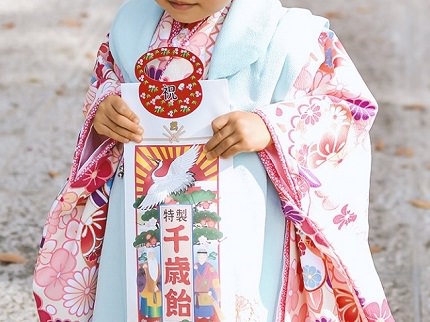-
- USA/Canada 1-800-285-2726
- Australia (02) 8006 4411

Shichi-go-san (literally translates to “7-5-3”) is a traditional rite of passage event for children held on November 15th. As the name suggests, the event celebrates girls who turn ages 7 and 3, and boys who turn 5, that year. The event is said to have originated in the Heian Period and has a meaningful history. In the past, it was not uncommon for a child to pass away at young age, often times before he or she reached 3 years old, due to complications at birth or illnesses. Because so many families lost their children, some started believing children to me messengers of God that may leave them until they reached the safe age of 7 years old. Shichigosan came about to celebrate the well-being of their children for reaching those ages in difficult times.
On this day, or during the nearest weekend, children of these ages dress up in kimono for girls and hakama for boys, and visit the shrines to celebrate the growth and well-being of the child. Shichi-go-san is generally the first time a boy wears a hakama, at age 5. For girls, although they wear the kimonos for the first time at age 3, at age 7, Shichi-go-san is still a special event because they are now given real “obi” (sash) rather than the simple cords they wore before. Another significance of age 3 was a tradition followed by samurais, and later commoners, where they shaved their children’s hair until age 3, though this is no longer followed today. Some families even have professional studio pictures taken of their children to remember this special day.

Another significant part of Shichi-go-san is the chitose-ame (literally translates to "thousand year old candy"). Chitose-ame is a long, thin red and white colored candy. Its length represents the longevity and healthy growth the parents wish upon their children. Neighbors and relatives often pass out chitose-ame to children who reach these special ages. The candy is packaged in a bag with a turtle or crane design, both animals which represent long life in Japan. Considering the history of how Shichi-go-san came about, it is not surprising that these “thousand year old” candies were given to children in hopes that they live a long life.
Celebration of girls' happiness and growth
National holiday for children to celebrate children's health, growth, and happiness
Bean-throwing ceremony to welcome the beginning of spring
Japanese Backpacks